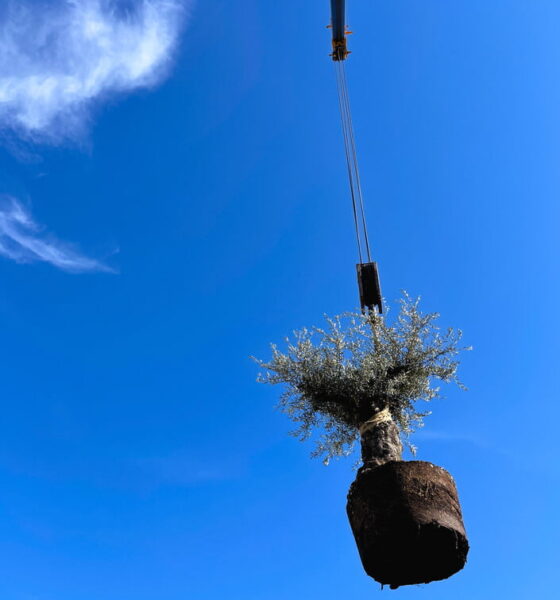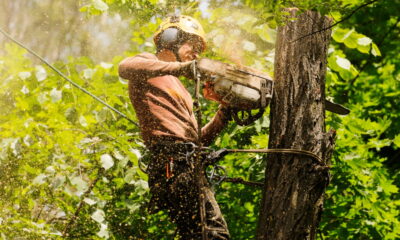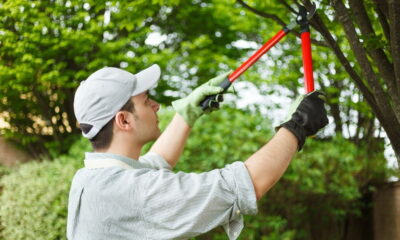

Environment
Eco-Friendly Tips to Dispose of Dead Trees in Your Property
Eco-friendly tree maintenance and removal is very important. You need to know how to take care of your trees and dispose of them in the most environmentally responsible way possible.
Across the USA, 36 million trees perish each year, according to the US Forest Service. This can be due to many reasons, but whatever the cause of death, dead trees can be highly troublesome. It can be hard to determine whether or not a tree is truly dead.
Even those who are versed in tree health and maintenance might find it hard to believe that a tree they have cared for has reached the end of its days. Those less informed may not even be aware that a tree is dead or dying and must be disposed of quickly. Dead trees are a threat not just to your safety and property, but also your neighbors’. As a responsible member of the community, it’s up to you to diagnose a problematic tree and see to its removal.
Signs that your tree might be sick
Leaves are the first indicator that something is wrong with a tree. You should follow eco-friendly tree maintenance tips if it can be saved. If it can’t, you need to find an eco-friendly way to remove it.
Shedding leaves off-season is a clear sign, but not every sick tree will lose its leaves right away. Sometimes the illness manifests in the form of discolored blotches, blemishes, or holes in the leaves. If leaf pigment changes before its time, such as in the summer, it points to diseases such as wilt or fungal infection. It is natural for some leaves to show holes because of insects feeding, but if a lot of leaves show damage, then that might mean that the tree is infested by parasites. Other indicators include stiff yet weak branches, a cracked or otherwise damaged trunk, and an overgrowth of fungus. If the disease is not too far along, then an arborist may be able to salvage the tree. But sometimes, it can be too late due to a number of factors.
How to tell if a tree is truly dead
Sometimes, it might not be completely apparent that a tree is truly dead. Even if it is completely devoid of leaves and buds, it might still be clinging to life or just dormant and waiting to bounce back. A good way to test is to check if the bark and branches have gotten completely brittle. If they have, then that is a strong indicator that the tree is beyond saving. Another telltale sign is if it is starting to lean. Every tree leans a little, as they rarely grow perfectly straight. As a tree dies, the roots shrivel up and lose their grip on the earth, thus causing it to lose its balance. Once it starts to lean at an unusual angle, it is likely as good as dead, and must be removed for safety purposes. It can take surprisingly little for such a tree to come crashing down.
Removing the dead tree
Even if you think that a tree is dead, an arborist’s professional opinion can still be useful. You might be wrong and the tree might still be alive, or tree removal might not be necessary as the roots will still hold. Once the arborist confirms that the tree is indeed dead or you decide to remove it anyway, it is time to get in contact with a land clearing company. The associated costs of tree removal can increase depending on a number of factors. The more obstacles there are, and the larger the tree, the more time and money has to be spent in order to remove it. Large trees are usually taken down in sections by a land clearing professional on a cherry picker. They start by pruning the large limbs, then cut the trunk in segments if they want to avoid disturbing the surroundings. If there are too many obstacles, the workers may have to climb the tree to work more precisely.
What to do after removal
After the tree has been cleared, you can ask the land clearing company to process it in a wood chipper and carry away the resulting bits. However, this incurs further costs. If the tree is small enough, a solid waste company can come and pick up the pieces of the dead tree. It is best to ask your local solid waste company if they can arrange pickup before removal begins. You can remove the tree stump yourself if the tree is small enough. Small trees usually have smaller root systems, so their stumps can just be dug up. But larger trees usually call for you to grind down the stump. Land clearing firms can handle either of these, at an added cost.
Removing dead trees can be an unsuspected inconvenience. But this doesn’t diminish the fact that it is necessary if it has the potential to destroy property or cause accidents. Even if you live in an area where houses are widely spaced, a dead tree can become uprooted and crash down at any time. This can claim the life of a pet, livestock, or worse, a person. As the owner of the property where that tree stood, it’s your responsibility to prevent that.


 Environment10 months ago
Environment10 months agoAre Polymer Banknotes: an Eco-Friendly Trend or a Groundswell?

 Environment11 months ago
Environment11 months agoEco-Friendly Home Improvements: Top 7 Upgrades for 2025

 Features9 months ago
Features9 months agoEco-Friendly Cryptocurrencies: Sustainable Investment Choices

 Features10 months ago
Features10 months agoEco-Friendly Crypto Traders Must Find the Right Exchange





























